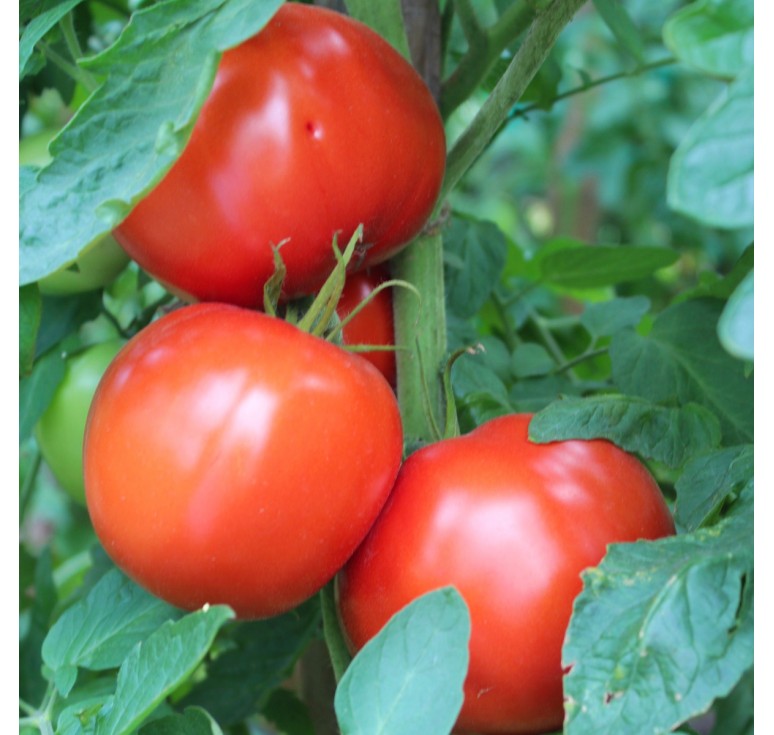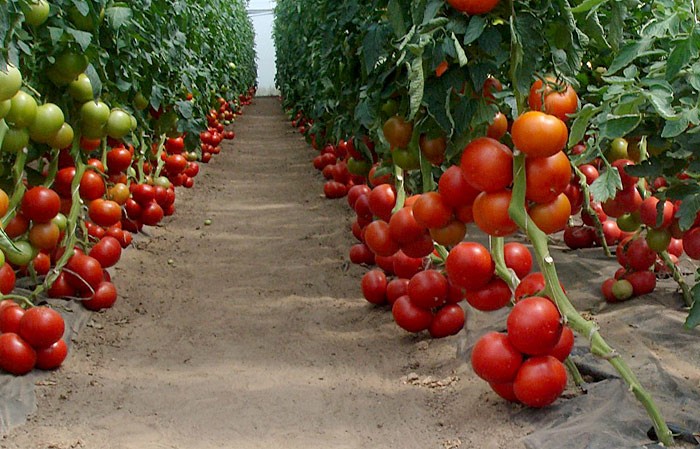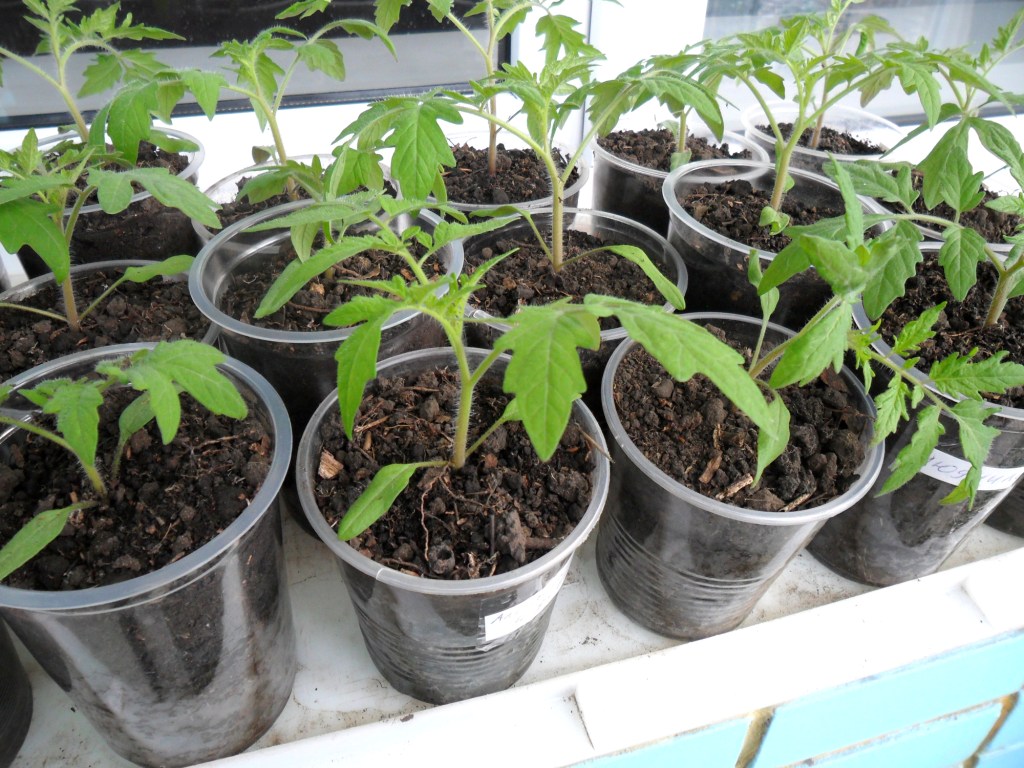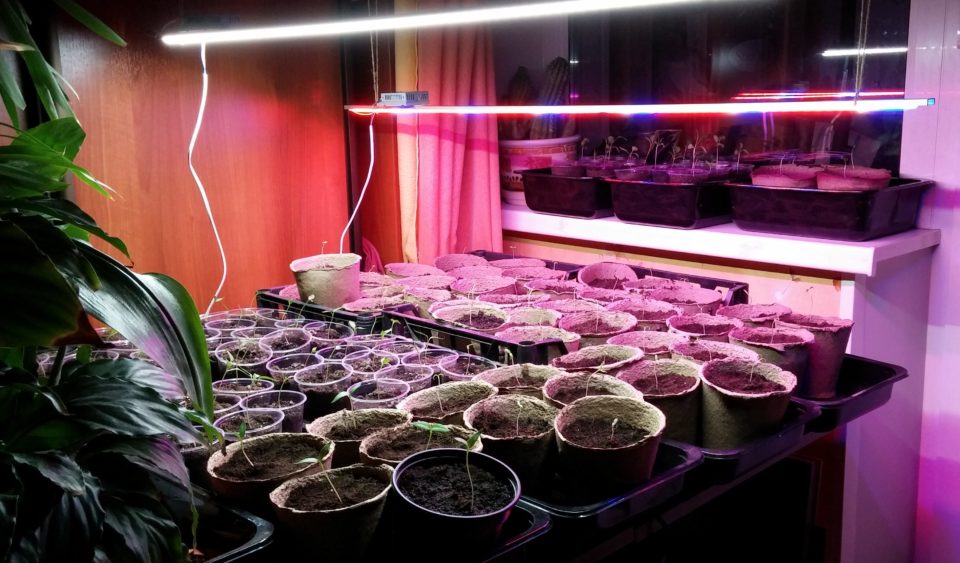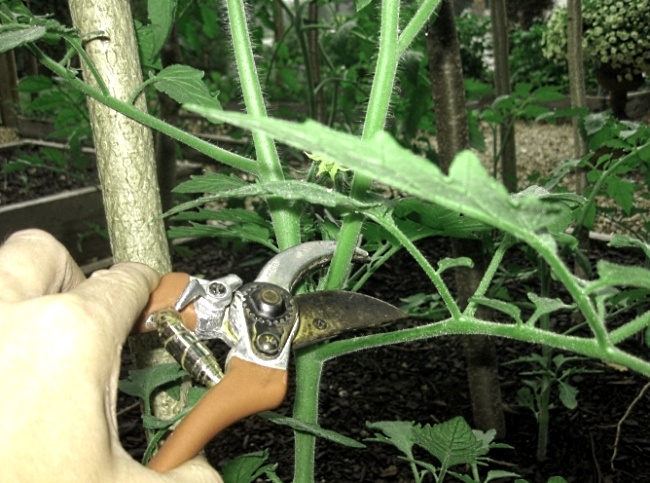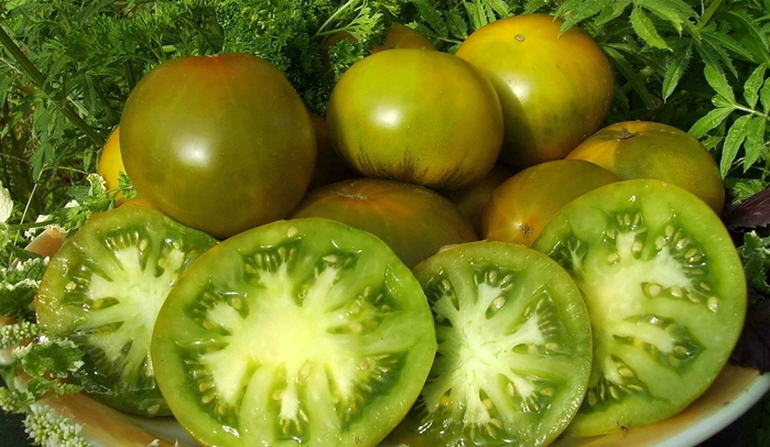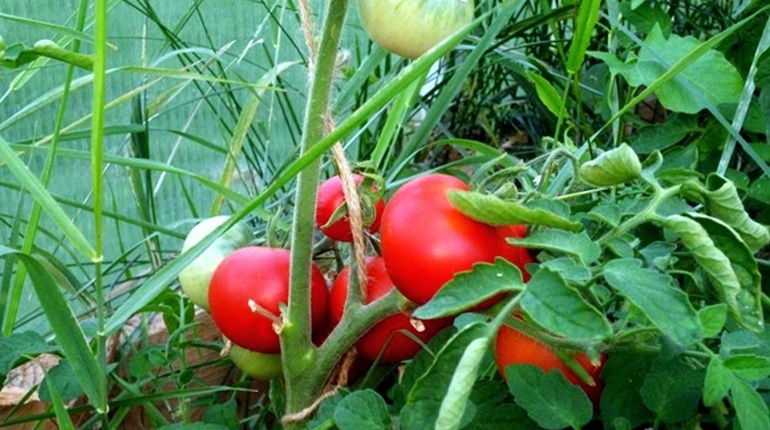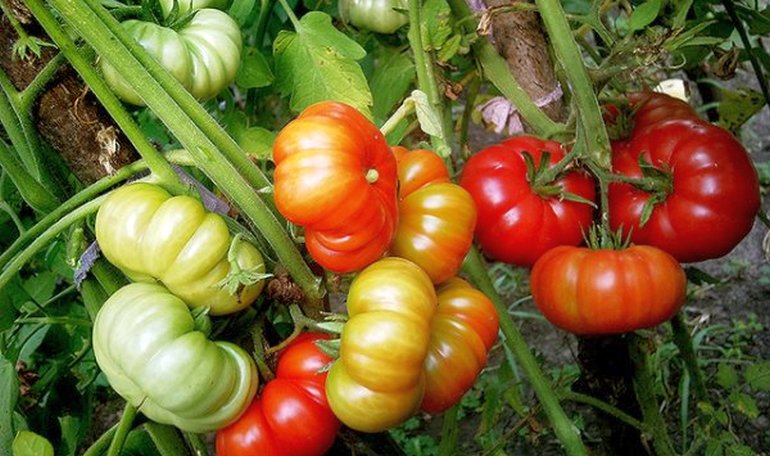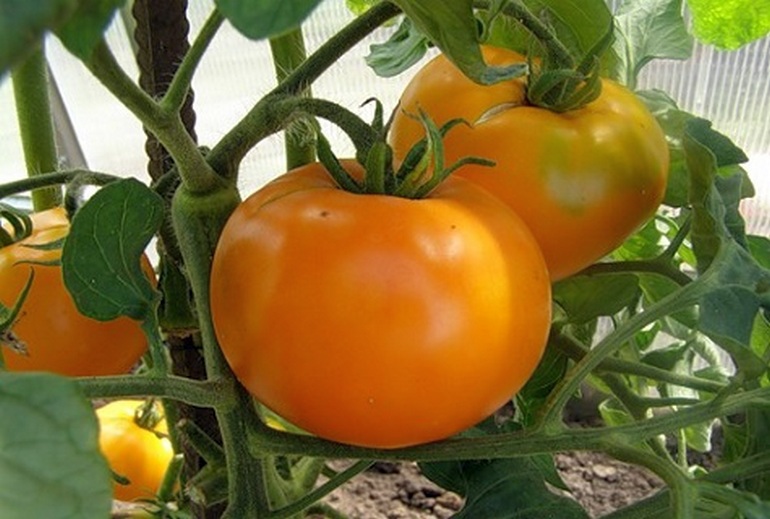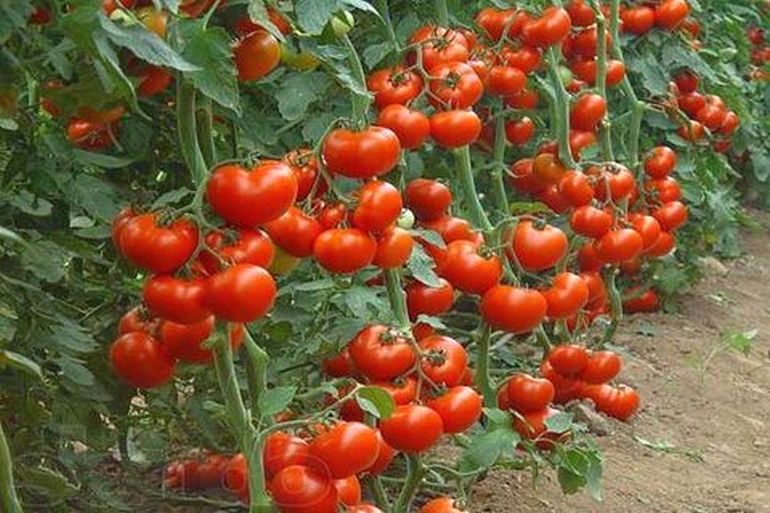Content:
Agricultural technicians are confident that seeds grown in Holland will never fail. In this country, breeders have bred and are successfully growing the Bobkat tomato. Russian vegetable growers also became interested in this variety and in 2008 registered it in the State Register in the North Caucasian District of the Russian Federation. Since then, farmers have given the Bobkat tomato the best characteristics and variety descriptions.
Specifications
Dutch vegetable growers, through constant experimentation, have grown an ideal variety that has practically no flaws.
All the positive qualities of the variety are collected from the Bobkat tomato:
- determinant variety, has an independent growth restriction;
- refers to medium early varieties, after planting in open ground, the fruits ripen in two months;
- powerful, well-developed root system;
- the height of the bush is 70-80 cm, sometimes it reaches 1 m;
- stem is strong, green, highly branched;
- leaves are dark green, corrugated, oval, wide, thick, large.
The first ovary is formed by a simple inflorescence after 4-6 leaves, and the next - after every 3 leaves. In total, up to 6 ovaries are formed on the bush, 4-5 tomatoes are formed on each. After fruiting of the last brush, the plant stops growing.
Bobcat tomatoes ripen almost at the same time, which makes them easier to sell and process on a large scale. Description of the fruit:
- large tomato, weighing 300-350 g;
- red, without a green spot at the stalk;
- the shape is round, slightly flattened, slightly ribbed at the stalk;
- the skin is glossy, firm, but not hard;
- ripening, do not burst.
Productivity of Bobkat tomato from 1 sq. meters - 4-5 kg.
Bakat tomatoes are resistant to heat, cold, and such diseases: tobacco mosaic, fusarium, verticilliosis.
Bobcat F1
Bobcat F1 is a variety of the Bobcat tomato series, it was also bred by breeders of a Dutch company that specializes in the development of new hybrid varieties and in the production of pesticides. In the Russian Federation, this variety was registered in 2007, in the North Caucasus.
The hybrid belongs to the determinant variety, has a powerful stem with large dark green leaves, which grows up to 80 cm. It has a sprawling strong root system. Brushes begin to form after the fifth bottom leaf and are repeated every 4-5 leaves.
The plant forms 5 brushes and finishes growing after the formation of the last ovary, the fruit has the following characteristics:
- tomatoes are round, ribbed, reaching maturity, acquire a bright red color;
- the weight of one tomato reaches 250-300 g;
- the pulp is sugary, juicy with a pleasant sourness;
- inside the fruit - up to 6 chambers with seeds.
Throughout the entire period, the fruits of this type of tomato are of the same size. Bobkat F1 is a medium-yielding variety, frost-resistant and heat-resistant. The bush is stamped, does not need pinching, but pinching is necessary.
Breeders are grafted with resistance to many diseases. Bobcat F1 is a late-ripening variety, the first fruits appear three months after planting the seedlings.
Growing features
The first stage of preparation for planting a Bobcat tomato begins at the end of the last winter month. At the end of February, seeds are sown for seedlings. Growing seedlings is a very crucial moment, the future harvest depends on its quality.
Seeds
A distinctive feature of this amazing variety is that the seeds do not require disinfection.
The soil for seedlings should be fertile, well fertilized and moist. To do this, mix the soil with wood ash, fertilize it with a mullein solution and eggshell tincture. The best option is to sow seeds in peat pots, then when transplanting into open ground, the seedlings will not be injured. When planting in ordinary boxes, it is necessary to pour drainage in the form of small stones, shell rock and coarse sand on the bottom.
A third of the fertilized soil is poured into a box, longitudinal grooves are made with an interval of 2.5-3 cm between them. The seeds are placed in the grooves not thickly, with a distance of 1.5-2 cm, to a depth of no more than 1 cm. Sprinkle with earth and lightly watered. Before emergence, the boxes are covered with foil.
The air temperature must be at least 24 degrees Celsius, otherwise the seedlings will stop growing. For most of the day, seedlings need daylight. To do this, they are kept on a windowsill or balcony, in the dark, they organize lighting with fluorescent lamps.
It is necessary to feed the plant once every two weeks with superphosphate and a peat-humic mixture.
As soon as the first 2 leaves appear on the sprout, the plant needs a pick. Picking the root of the seedling will strengthen the root system, which in the future will positively affect the yield. After the first dive, spray the plant with boric acid solution. Carry out the second pick in two weeks, do not forget to reject weak seedlings.
Soil preparation
Humus should be introduced into the soil for Bobkat tomatoes in the fall. For three years, tomatoes cannot be planted in the soil where related vegetables grew before:
- eggplant;
- potatoes;
- pepper and physalis.
The tomato yield will be great if the following have grown on this soil:
- turnips and onions;
- cabbage and cucumbers.
If vegetables infected with diseases are detected in this soil, it is not recommended to grow tomatoes for 4 years.
A week before planting, disinfect the soil with a solution of copper sulfate, in a proportion of 20 g per bucket of water, fertilize the soil with wood ash, humus.
From an excess of fertilizers, Bobkat can become fat, the green part of the plant will begin to develop vigorously, so it is enough to add a small amount of organic matter to the soil.
Transplanting
As soon as the seedling grows to 20-25 cm, it must be transplanted into open ground, because overexposed seedlings do not adapt well in a new place. Before this, the plant must be taken out to a cooler room for hardening for a week. Seedlings are planted:
- in open ground - in early June;
- into open ground with a film cover - at the end of May;
- in the greenhouse - at the end of April.
Three days before planting in open ground, the seedlings are watered every day to facilitate the process of transplanting the plant.
Seedlings are planted in the ridges, after 50-60 cm, the distance between the ridges is at least 40 cm.
Bush formation
All leaves should be removed from the bottom of the bush, as they can rot from wet soil. Also thin out the leaves along the entire length of the stem, they take on a lot of nutrients, which reduces the yield. Do not pick off the leaves all at once, but 2-3 per week, it is not so painful for the plant.
The formation of a tomato bush Bobcat F1 in two stems will increase the yield, but will extend the ripening period. For early tomatoes, it is best to leave one stem. For the second, they leave the lower stepson. The rest of the stepsons should be removed.
The Bobkat bush, although not high, requires a garter. Having planted the seedlings, it is necessary to drive a peg near each bush to tie the plant.
Watering
Watering should be regular, infrequent, but abundant. Water the plant under the root, to preserve moisture, cover the ground with straw.
With an excess of moisture, the tomato will lose its sweetish taste, will be sour and watery. In addition, fungal diseases can develop, ovaries and flowers will fall off.
Bobkat tomatoes need slightly moist soil and dry fresh air. For this, the greenhouse must be regularly ventilated.
Advantages and disadvantages of the variety
Like any other variety, Bobkat has its pros and cons.
| Benefits | disadvantages |
|---|---|
| Grown in open ground and greenhouses | Pinching required |
| Good yield, bears fruit before the onset of cold weather | The need to buy new seeds every year |
| Frost and heat resistant | Late maturation in the open field |
| The bush is low, does not require pinching | |
| Large fruits with excellent taste | |
| Storage duration | |
| Transportable | |
| Disease resistant |
Dutch Bobcat tomatoes are consumed both fresh and processed. The fruits are suitable for canning whole, and they do not burst. Tomato juice from Bobkat is used in dietary and baby food. An unpretentious variety is not afraid of diseases, pests and cataclysms of nature. Bobkat tomatoes will give a good harvest with wonderful fruits even with little physical effort.
